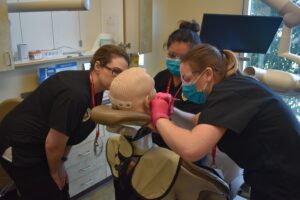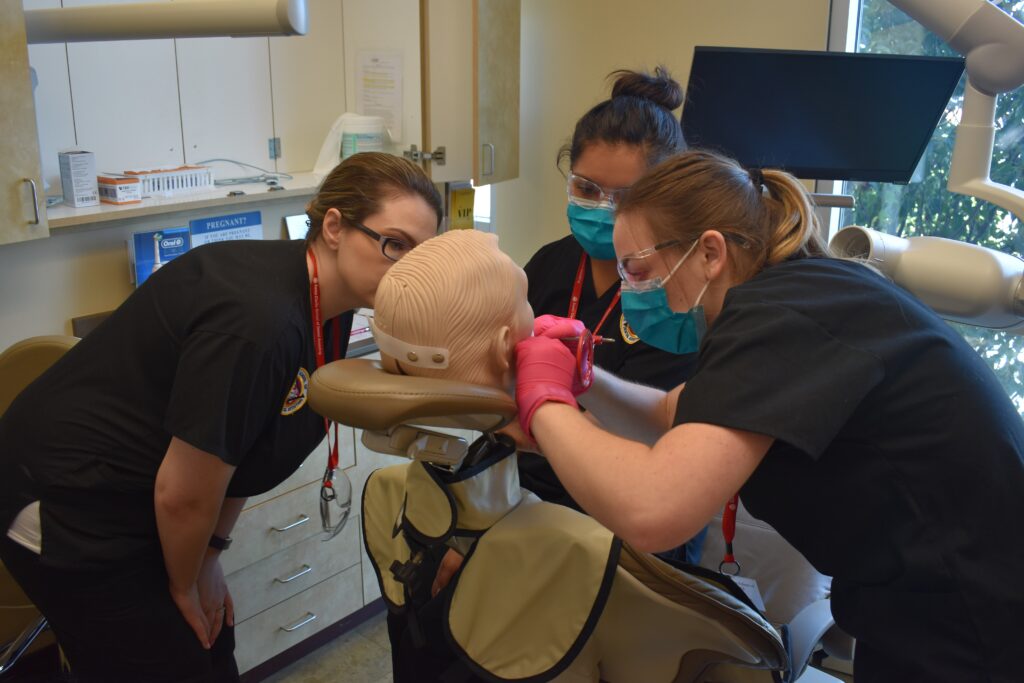Dental Assisting Terminology: Intro
There are many terms used in the dental field on a day-to-day basis. First, in today’s article we are going to talk about the same of the basics. Secondly, if you are on your way to becoming a dental assistant knowing dental assisting terminology will help you greatly. However, don’t rest on your laurels, even if you already know these terms or if you manage to memorize them, we recommend you keep adding to your arsenal and never stop improving!
Dental Assisting Terminology: Teeth Names
To begin with, if you are going into the dental field and are going to be intimately involved patient’s teeth, then you should probably know what you are looking at. And more than that, you should know how many teeth humans have. The answer is 32. We have 16 in our maxilla and 16 in our mandible. Here is the terminology of what your teeth are called:
- Bicuspid – A premolar tooth; a tooth with two cusps.
- Canine – Any of the four teeth situated between the lateral incisor and the first premolar, your vampire teeth! Except you also have to include the ones in your bottom jaw.
- Cusped – Single cusped tooth located between the incisors and bicuspids.
- Distal – The surface or position of a tooth most distant from the median line of the arch.
- Incisor – Just like scissors, these teeth are used for cutting. They are located in the front of the mouth in both jaws.
- Molar – These are your chewing teeth or grinding teeth. Located in the back of your mouth and they have large crowns.
If you were to go from on one your wisdom teeth to the front two teeth, this is what the order and names of the teeth would be called.
- Wisdom tooth / third molar.
- Second molar.
- First Molar.
- Second premolar.
- First Premolar.
- Canine (vampire tooth).
- Lateral incisor.
- Central incisor.
That’s one half of your jaw or arch of your mouth, which is 8 teeth. Remember it is 16 total per dental arch. And 32 total for your mouth.
Dental Assisting Terminology: 4 Major Tissues of Teeth
- Mandible – The lower jaw or dental arch.
- Maxilla – The upper jaw or dental arch.
- Palate – The roof of the mouth that separates oral and nasal cavities.
- Periodontal – “Peri” is Greek for around and “Odont” means tooth. So, it’s the tissue supporting and surrounding your teeth.
- Root – The anatomic portion of the tooth that is covered by cementum and is located in the aveoulus (socket) where it is attached by the periodontal apparatus, radical portion of tooth.
- Root Canal – The chamber within the root of the tooth that contains the pulp. (Am I the only person who thinks of orange juice when I read pulp?)
Dental Procedures & Mouth Issues
These are words that you are going to constantly hear in a dental practice.
- Abscess – Infection in tooth, bone or soft tissue.
- Biopsy – Process of removing tissue for histologic evaluation.
- Cavity – Also known as caries. Cavities are caused by untreated tooth decay.
- Crown – Used to restore the tops of damaged teeth. Also known as dental cap.
- Dental Implant – a surgical component that interfaces with the bone of the jaw or skull to support a dental prosthesis such as a crown, bridge, denture, facial prosthesis or to act as an orthodontic anchor.
- Exostosis – Benign boney growths.
- Extraction – Removing a tooth, whole or in parts.
- Fracture – Breaking or cracking of a tooth.
- Gingivitis – Gum tissue inflammation that can lead to bleeding.
- Impacted tooth – Tooth that can’t fully break through the gum and requires surgical extraction (wisdom teeth).
- Stomatitis – Inflammation of the membranes of the mouth.
Conclusion
This concludes our list. Like we stated earlier don’t just stop here. These are the basics but there is more to learn! You still need to learn the name of the equipment you might be using. Hey maybe that should be our next blog! We hope this help you out.
As always at Santa Clarita School for Dental Assisting, we want to set you up for success. If you have any questions about our program, check it out here.
